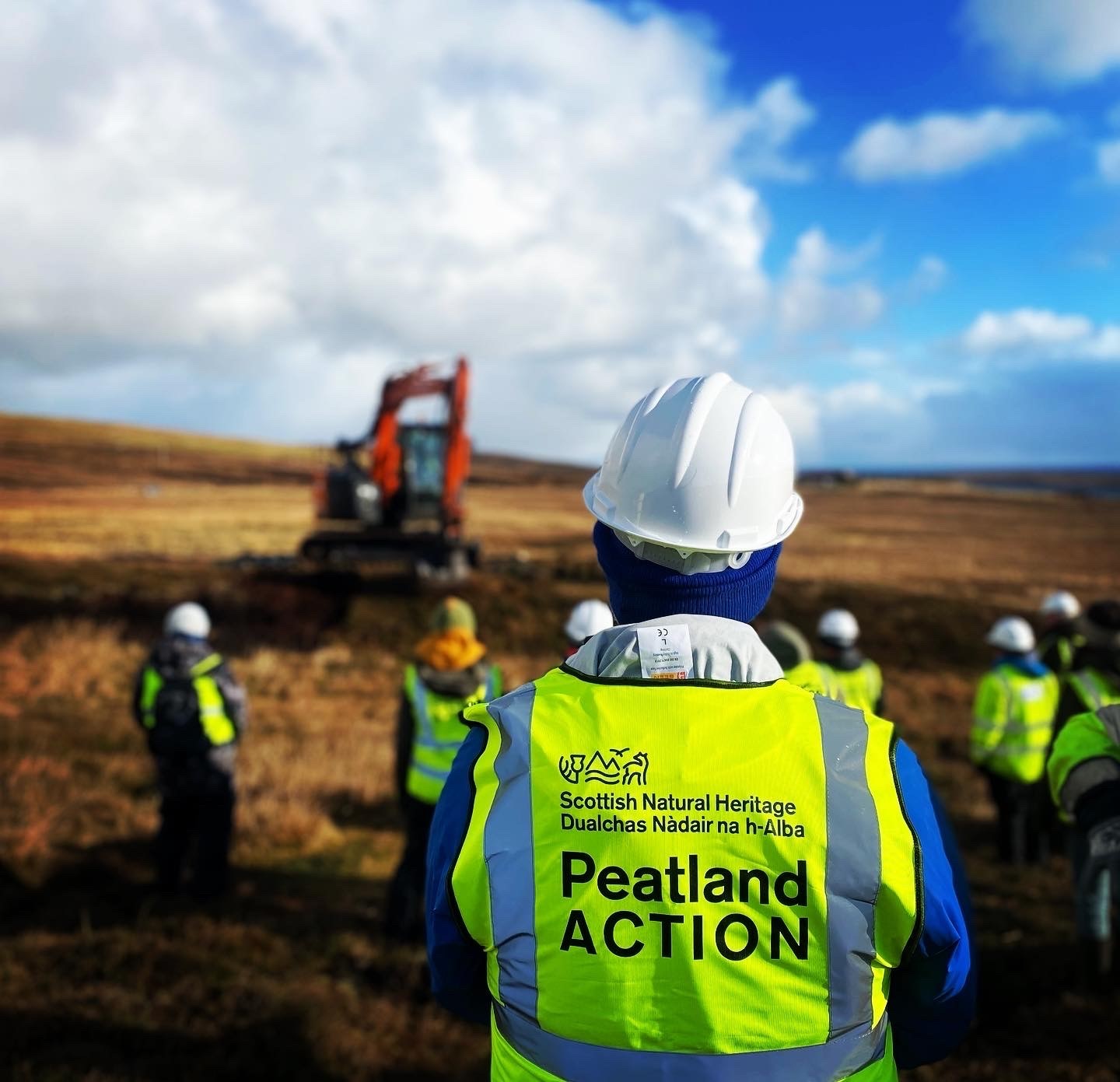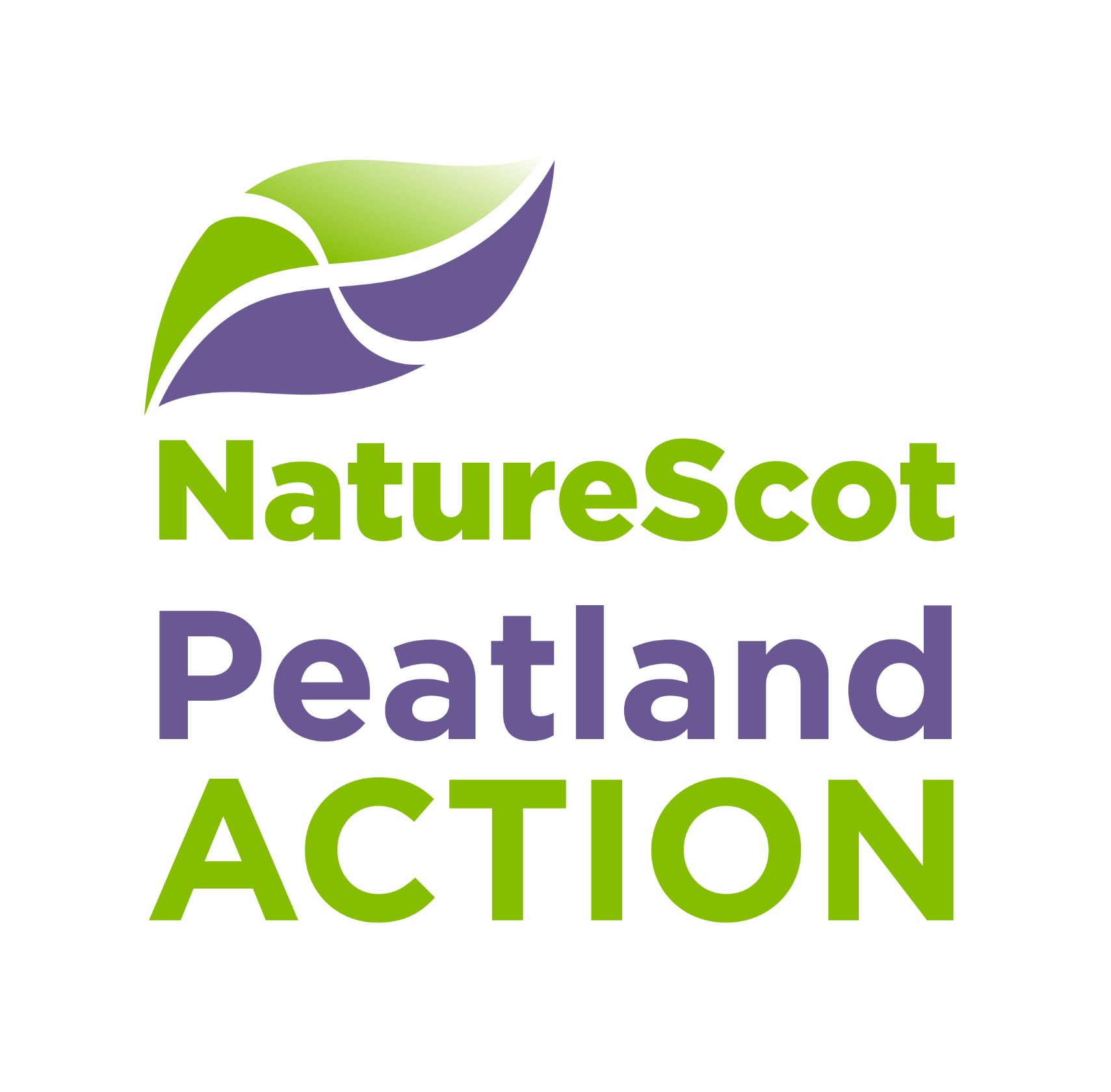Peatlands and Peatland Restoration in Shetland
 What are Peatlands
What are Peatlands
- Peatlands, or bogs, are wetland landscapes with waterlogged soils
- Over half the area of Shetland is covered in peat
- The peatland or “blanket bog” that cloaks Shetland hills is an internationally important wildlife habitat
- Multicoloured carpets of sphagnum moss form the building blocks of peatlands
- The very slow decomposition of sphagnum moss in wet bog conditions forms peat
Why are they important
- Peatlands are beautiful and iconic landscapes
- Peatlands are among the most valuable ecosystems on Earth
- In good condition, with an active growing layer of sphagnum moss, peatlands are a haven for wildlife, store carbon, regulate water flow, purify water and can support our native hill sheep
- Peatlands store more than three times as much carbon as the rainforests and help protect our planet from climate change
- Healthy peatlands act as a sink for greenhouse gases
- Damaged peatlands are huge emitters of carbon dioxide and contribute to climate change rather than mitigating it
- Cultural significance too- peatlands are home to trowes and giants, lukki minnie, njuggles etc
What can be done - Peatland Restoration
Peatland restoration benefits the environment, biodiversity, carbon capture & storage and local folk
- The key to restoring peatland is to raise the water table and repair bare peat so that bog vegetation, including the vital sphagnum mosses, can recover
- Eroding hags and gullies and “re-profiled” and blocked using 7- 12 tonne diggers under the control of skilled operators
- The degraded, broken and eroding landscape is transformed into an undulating landscape which is moister, richer in biodiversity and no longer emits huge amounts of CO2
- Most peatland restoration is carried out using machines but there are also options for smaller scale hand built projects
What is Shetland Amenity Trust doing?
SAT employs two Peatland Action Project Officers, fully funded by the Scottish Government Peatland Action Programme, administered by NatureScot
PA POs work with land managers who are interested in carrying out peatland restoration on their land. If you are a land manager the PA POs will guide you through all aspects of your potential project from initial scoping for the project, peat depth surveys, peat slide risk assessments, funding application, right through to project managing works on the ground and final reporting.
Peatlands Stats
Scottish Govt target is to restore 250,000 ha of peatland by 2030, (that’s out of a total approx. 600,000 ha of degraded peatland, so about 42%) and have committed £250 million for peatland restoration over the next 10 years. By 2045 the ambition is to have all peatland in Scotland restored. At the moment there is 100% grant funding available for the capital works needed to restore peatland.
Shetland
- All our hills are blanketed a type of peatland called blanket bog . The total area of peatland in Shetland is about 55700 ha (The Carbon and Peatland 2016 map)
- SNH estimate 77% of Shetland peatland is damaged ie over 40,000 ha
- Damaged peatland is a huge emitter of CO2- the erosion gullies/hags and bare peat which are typical of Shetland emit 23.84 tCO2e/ha/yr (Peatland Code figures)
- So degraded peatland in Shetland could be emitting nearly 1 million tCO2e per year
- Funding for peatland restoration comes from the Scottish Govt Peatland Action Programme
- To date peatland restoration projects have brought in over £1.4milion to Shetland, its all local contractors doing the work so most of that money is staying in Shetland, ie huge socio-economic benefits on top of all the biodiversity and climate change benefits.
The future
- Managing and restoring our peatlands requires a joint approach involving land owners and managers, environmental and technical expertise plus funding.
- If we aim for similar targets to those for whole of Scotland we will be looking at just over 22,000 ha restored by 2030 (22159.2 ha)
- To do this we need to increase capacity to 2500 ha of restoration per year, that needs trained machine operators and support services and would provide lots of jobs in our most rural areas.
- Over 400 hectares of peatland in Shetland have already been put on the road to recovery which will start to save over 8000tonnes of CO2 every year but there is still plenty of scope for more.
- For individuals interested in peatland restoration there are practical volunteering opportunities to get involved with – good for physical and mental health and will also help folk offset their carbon footprint.
More information, help and resources
- Peatland Action - https://www.nature.scot/climate-change/taking-action/peatland-action/peatland-action-what-we-do
- IUCN - https://www.iucn-uk-peatlandprogramme.org/about-peatlands
- Sue White, SAT Peatland Restoration Officer - sue.white@shetlandamenity.org
- Ash Lynn-Tavener, Peatland ACTION Officer - ash.tavener@shetlandamenity.org





